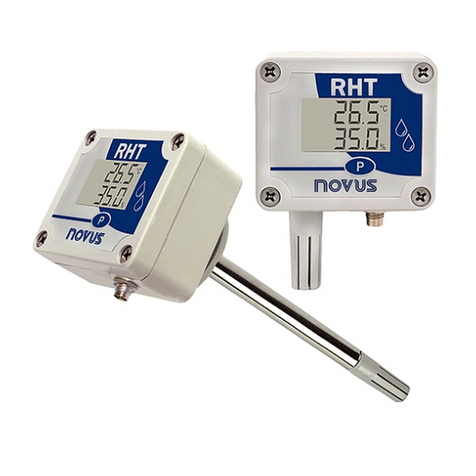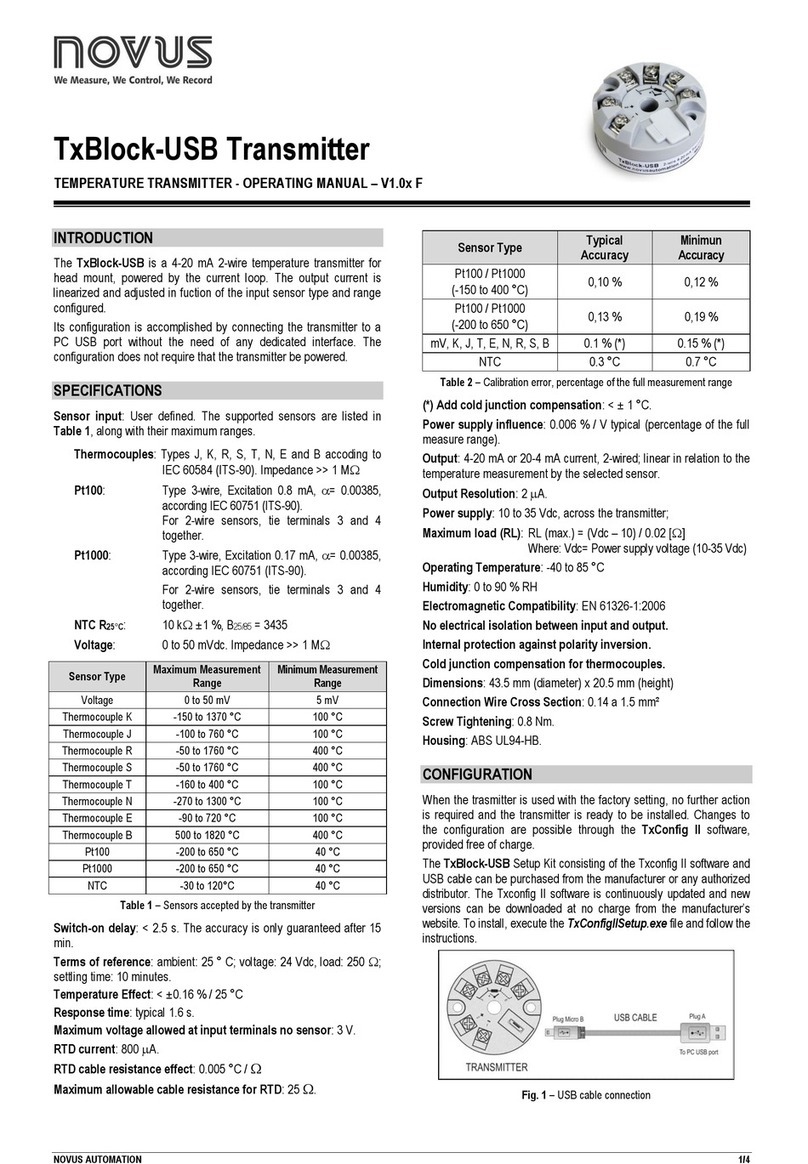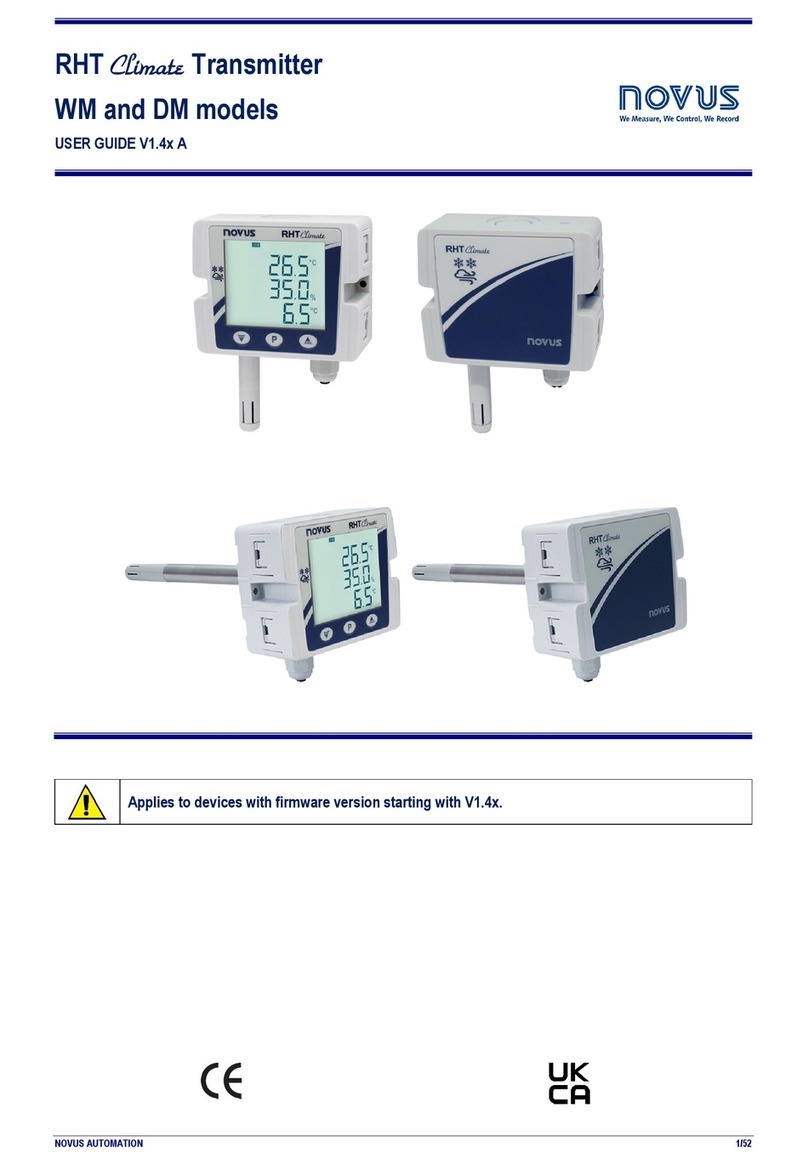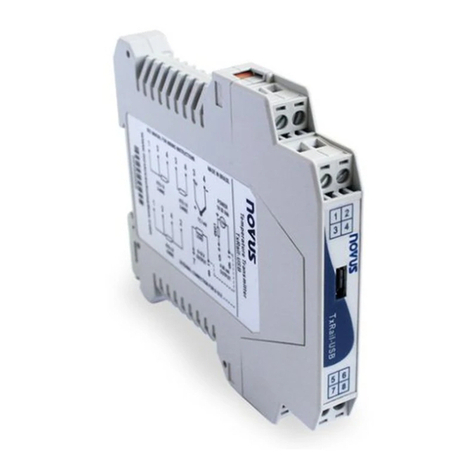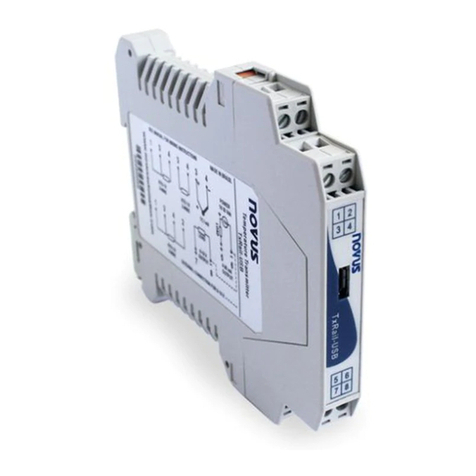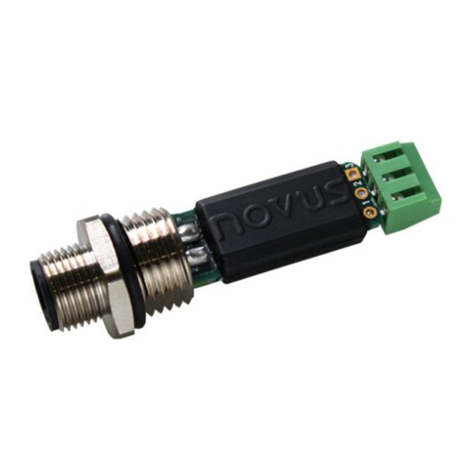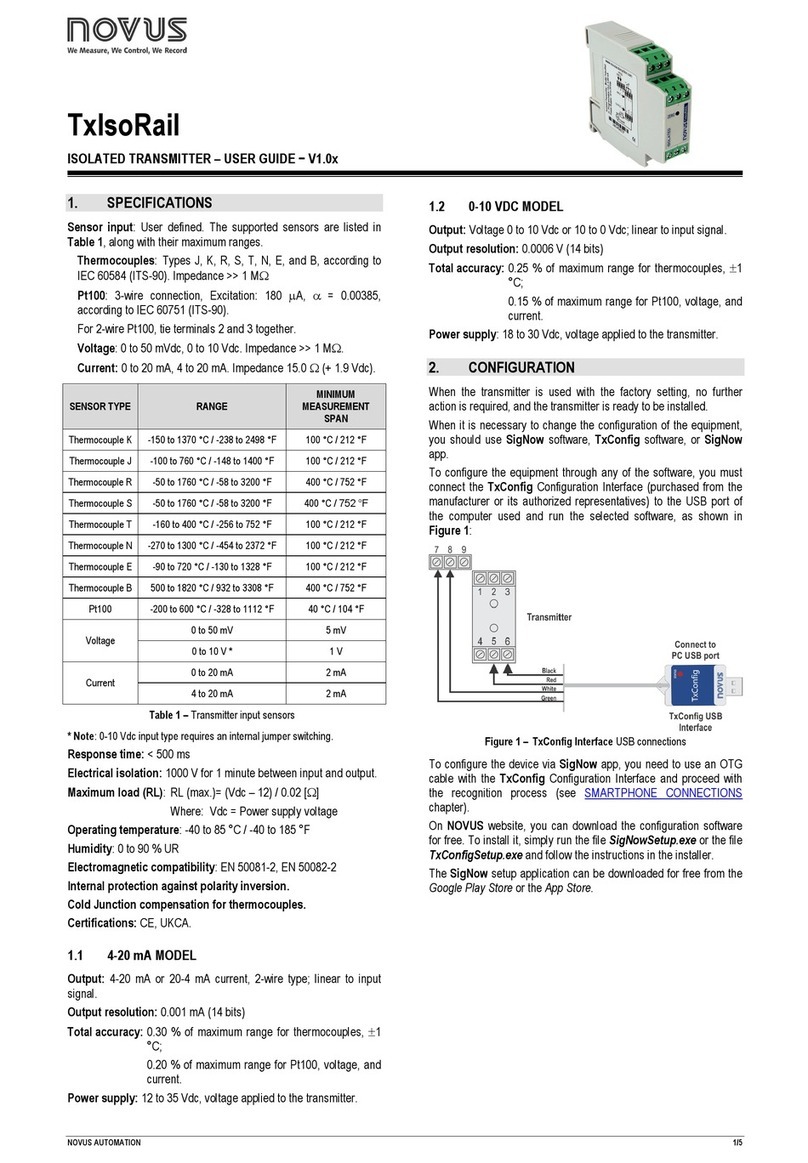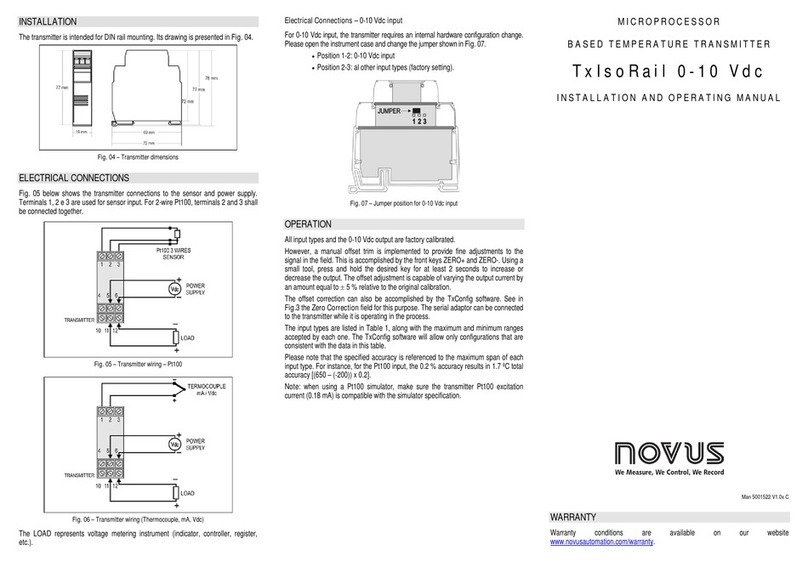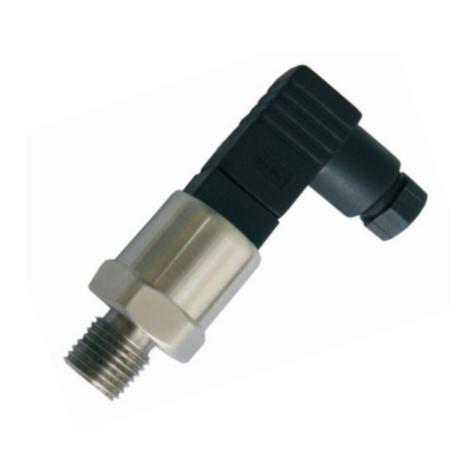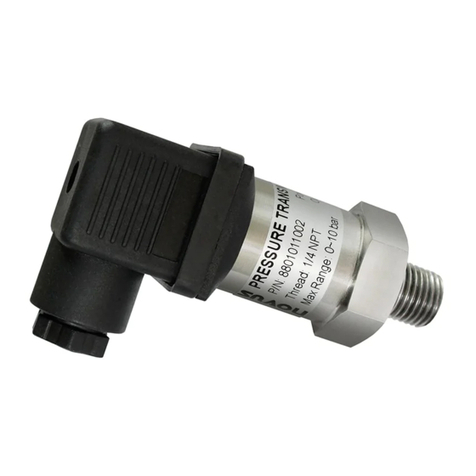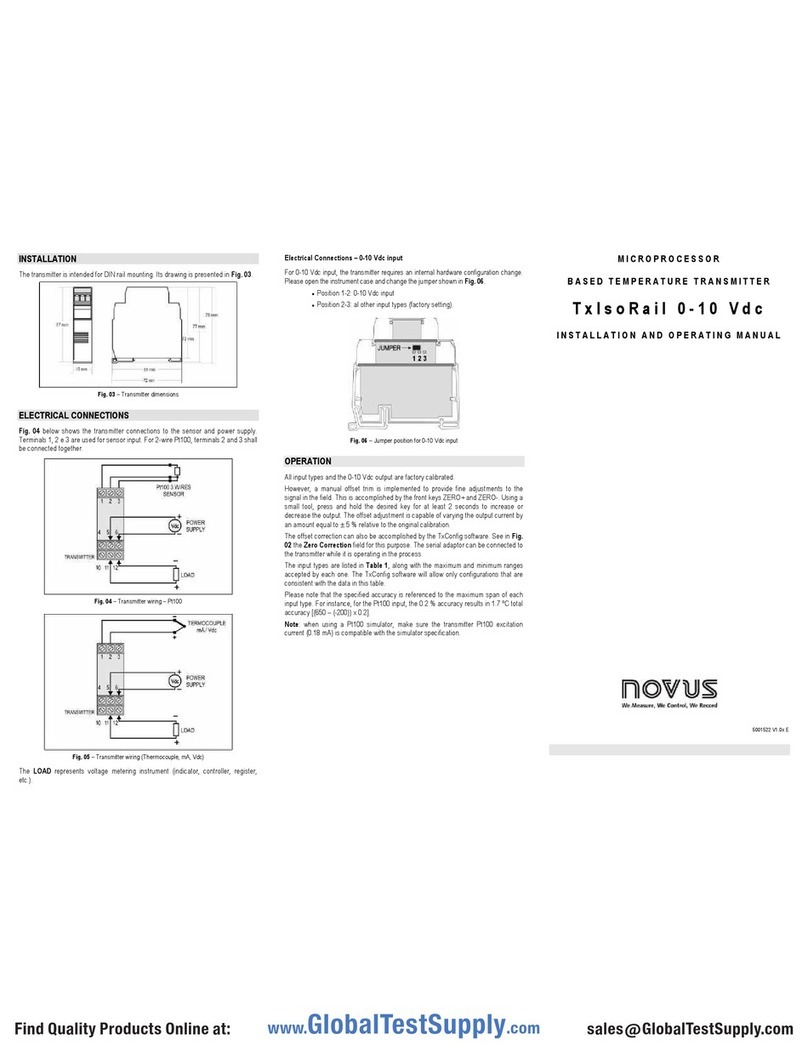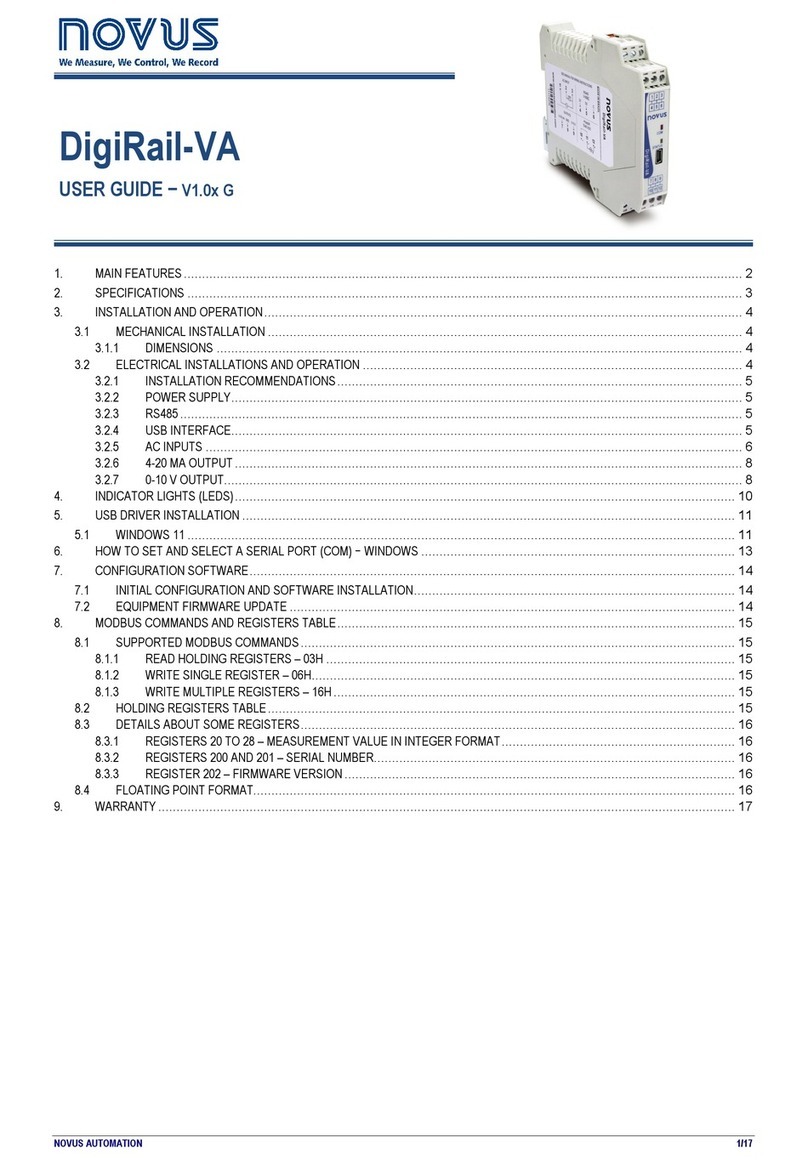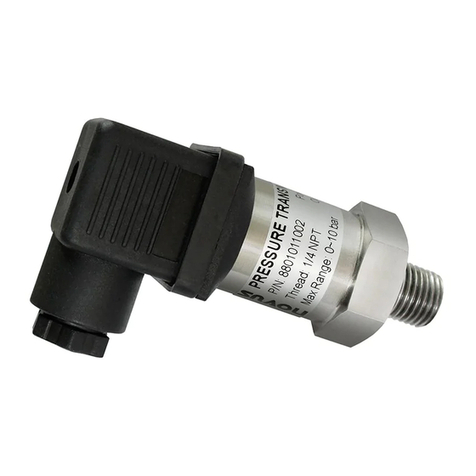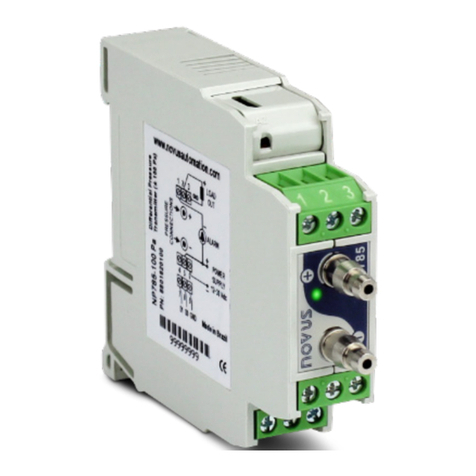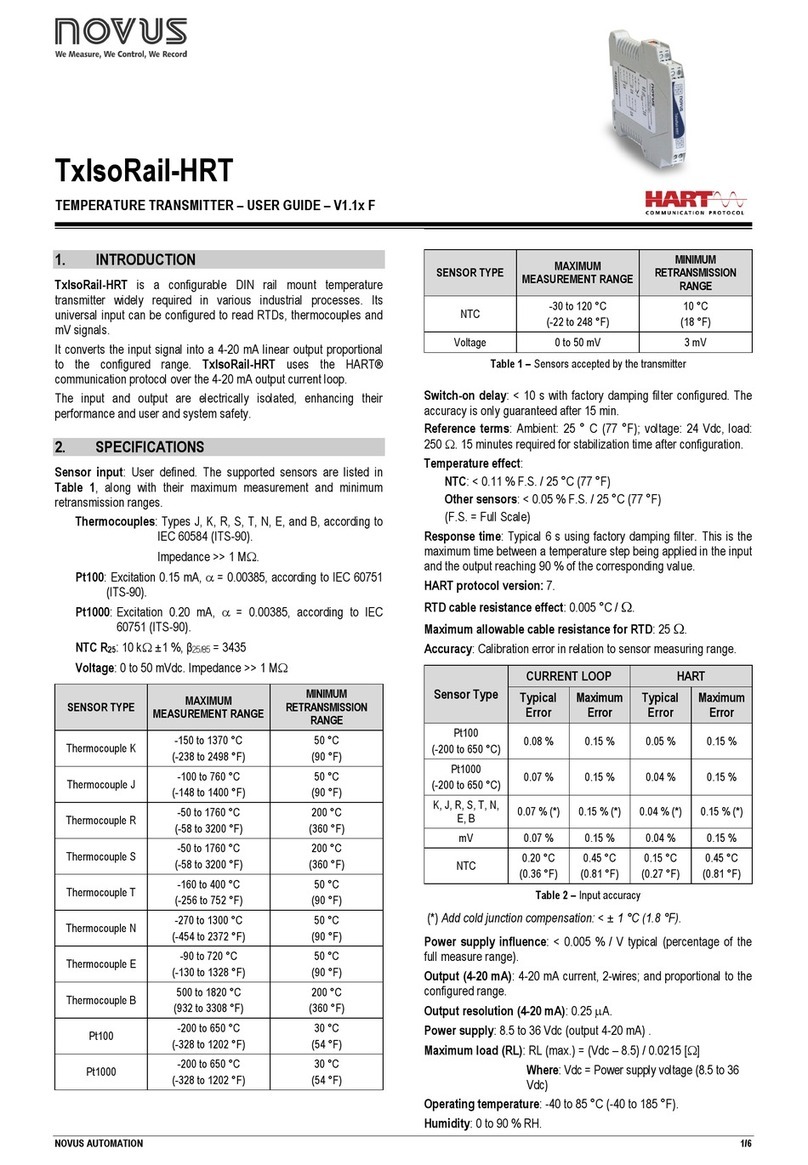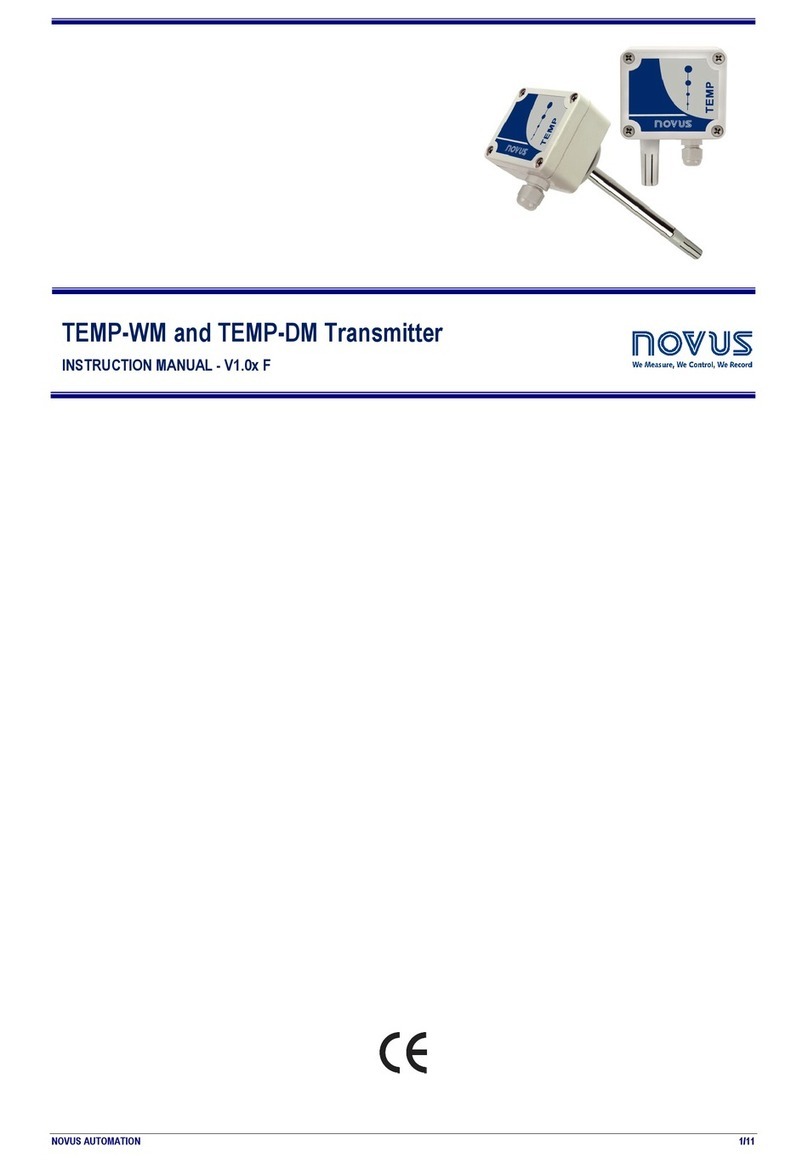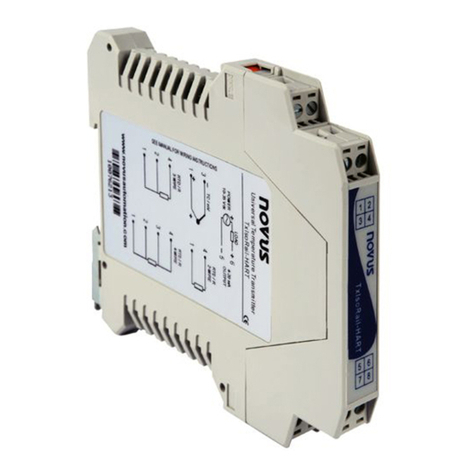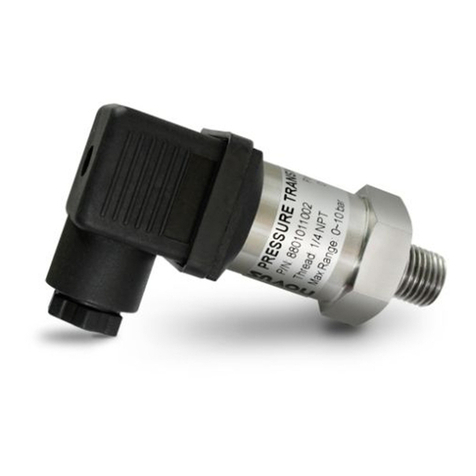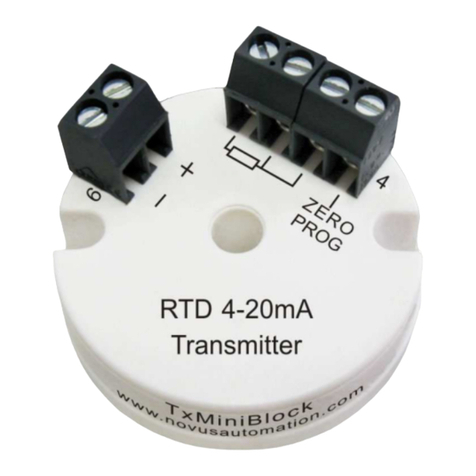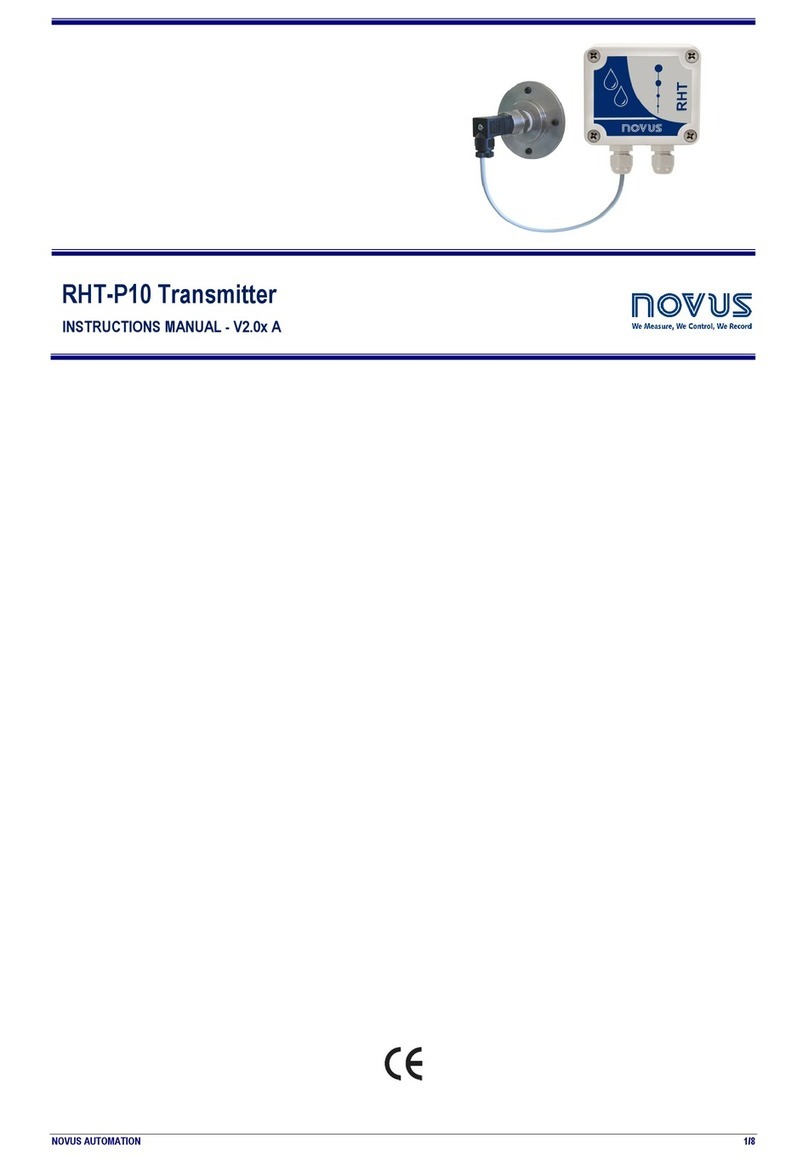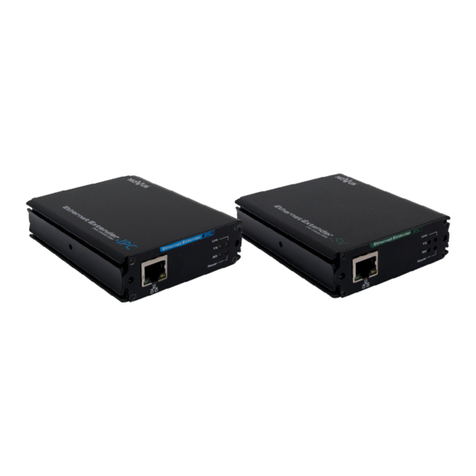
NOVUS AUTOMATION 1/4
TXMINI-DIN43650
– V1.0x F
1. CONFIGURATION
TxMini-DIN43650 Transmitter is a 4-20 mA 2-wires temperature
transmitter for head mount, powered by the current loop. It can be
configured using SigNow or TxConfig II software or SigNow app.
The output current is linearized according to the selected input
sensor and adjusted to the configured range.
2. SPECIFICATIONS
Sensor Input: User defined. The supported sensors are listed in
Table 1, along with their maximum ranges.
Pt100: 3-wire type, Excitation: 0.8 mA, α= 0.00385, according
to IEC 60751 (ITS-90).
Pt1000: 3-wire type, Excitation: 0.8 mA, α= 0.00385, according
to NBR 13773. IEC 60751 (ITS-90).
For 2-wire sensors, tie terminals 3 and 4 together.
Switch-on delay: < 2.5 s. The accuracy is only guaranteed after 15
minutes.
Calibration error:< 0.12 % (RTD).
Reference terms: Ambient: 25 °C; voltage: 24 Vdc, load: 250 Ω;
settling time: 15 minutes.
Temperature Effect: <± 0.2 % / 25 °C.
Response time: Typical 1.6 s
Maximum voltage allowed at input terminals no sensor: 3 V.
RTD current: 800 µA.
RTD cable resistance effect: 0.005 °C / Ω.
Maximum allowable cable resistance for RTD: 25 Ω.
SENSOR TYPE TYPICAL
ACCURACY
MINIMUM
ACCURACY
Pt100 / Pt1000 0.1 % 0.2 %
Table 1 –Calibration error, percentage of the full measurement range
Power supply influence: 0.006 % / V typical (percentage of the full
measure range).
Output:4-20 mA or 20-4 mA current, 2-wired; linear in relation to the
temperature measurement by the selected sensor.
Output resolution: 2 µA.
Power supply: 8 to 35 Vdc, across the transmitter.
Maximum load (RL):RL (max.) = (Vdc – 8) / 0.02 [Ω]
Where: Vdc = Power supply voltage (8-35 Vdc)
Operating temperature: -40 to 85 °C.
Humidity: 0 to 90 % RH.
Electromagnetic compatibility: EN 61326-1:2006.
No electrical isolation between input and output.
Internal protection against polarity inversion.
Cold junction compensation for thermocouples.
Thread type: M24x2.
Connection wire cross section: 0.14 a 1.5 mm² (*).
* When soldering the Pt100 wires, each wire should be inserted
no more than 1 mm into the hole.
SENSOR
TYPE
MAXIMUM
MEASUREMENT
RANGE
MEASUREMENT
RANGE
Pt100 -200 to 650 °C
(-328 to 1202 °F)
40 °C
(104 °F)
(-328 to 1202 °F)
(104 °F)
Table 2 –Sensors accepted by the transmitter
Order Codes:
-P/N: 8806050406: TxMini-DIN43650 transmitter.
-P/N: 8816021069: TxConfig-DIN43650 Interface.
3. CONFIGURATION
The factory setting of the transmitter is for Pt100 input with a range of
0 to 100 °C and output for maximum current in case of error. When
using the transmitter with this setting, no further commissioning is
required. In this case, its installation can be carried out immediately.
When it is necessary to change the configuration of the equipment,
you should use SigNow software, TxConfig II software, or SigNow
app.
To configure the equipment through any of the software, you must
connect the TxConfig-DIN43650 Configuration Interface (purchased
from the manufacturer or its authorized representatives) to the USB
port of the computer used and run the selected software.
To configure the device via the SigNow app, you need to use an
OTG cable with the TxConfig-DIN43650 Configuration Interface and
proceed with the recognition process (see SMARTPHONE
CONNECTIONS chapter).
On NOVUS website, you can download the configuration software for
free. To install it, simply run the file SigNowSetup.exe or the file
TxConfigIISetup.exe and follow the instructions in the installer.
The SigNow setup application can be downloaded for free from the
Google Play Store or the App Store.
The communication interface TxConfig-DIN43650
is not electrically isolated from the transmitter
input.




